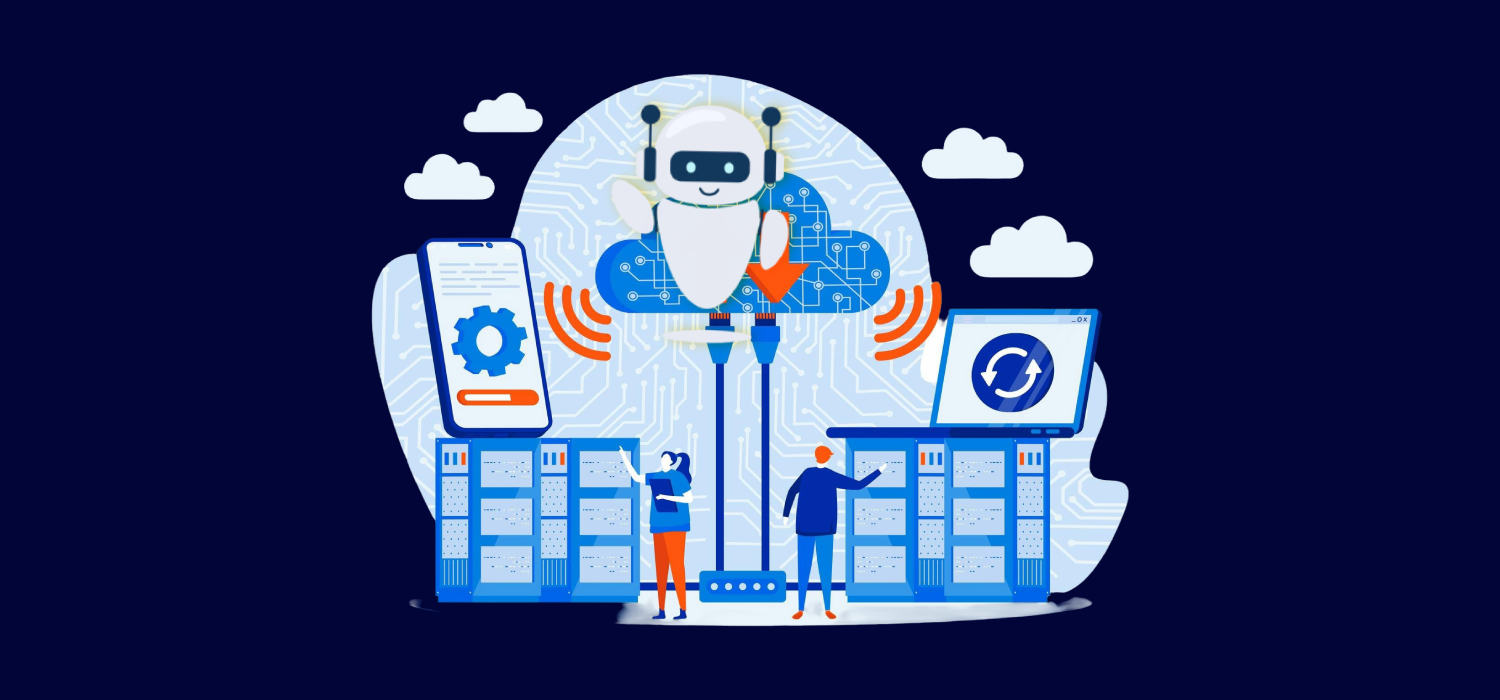RPA in Telecom: Trends Simplifying 5G Network Management and Service Provisioning
Telecommunication RPA solutions are becoming central to how operators manage the complexity of modern connectivity, especially as 5G expands across diverse services, devices, and enterprise applications.
With rising expectations for faster provisioning, resilient networks, and real-time customer support, Robotic Process Automation in telecom is shaping a new operational model that reduces repetitive workload and enhances service accuracy.
According to a survey, more than 50% of businesses have implemented RPA, and many more will do so within the next two years (Market.us Scoop).
How Is RPA Redefining 5G Network Management for Telecom Operators?
5G networks introduce a multilayered environment where provisioning, monitoring, and optimization need constant attention. RPA in telecommunication USA is addressing this challenge by bringing structured automation to workflows that typically rely on manual intervention.
Key Applications
- Automated network performance analysis across large device clusters
- Real-time alert processing to support rapid issue resolution
- Configuration management for radio and core network elements
- Rule-based ticket routing to the right operations teams
With RPA taking over predictable routines, engineering teams gain more bandwidth to focus on complex network planning and customer-facing improvements.
A quick view of where RPA is adding value:
| Area | How RPA Helps |
| Network provisioning | Automates configuration steps and validation checks |
| Monitoring | Handles alarms, correlates events, and triggers workflows |
| Service quality | Ensures consistent audit routines and compliance reviews |
| Operational tasks | Manages repetitive field requests and backend processes |
What Role Does RPA Play in Simplifying Service Provisioning For 5G Use Cases?
5G introduces more personalized service tiers, network slicing, and enterprise solutions that require accurate provisioning. OSS/BSS automation with RPA streamlines these workflows by coordinating the sequence of tasks involved in activation, modification, and suspension.
Examples of Provisioning Tasks Supported by RPA:
- Validating customer details against multiple backend systems
- Updating CRM, billing, and policy systems in one coordinated flow
- Checking device compatibility for enterprise or consumer plans
- Executing multi-step approvals without operator delays
For telecom providers delivering IoT bundles, private 5G networks, or advanced enterprise solutions, RPA ensures that provisioning is predictable, error-free, and customer-friendly.
How Do Telecom Companies Use RPA To Improve Customer Operations?
Customer-facing operations rely on timely responses and accurate information, which makes them ideal candidates for Robotic Process Automation in telecom. By automating interactions that follow fixed rules and repeat often, operators provide faster and more consistent support.
RPA adoption in telecom climbs 55% with firms improving efficiency through automated customer service. (A3Logics, 2025)
Common Applications
- Automated resolution of common billing issues
- Intelligent extraction of customer history to support agents
- Preprocessing support tickets before agent handover
- Automated updates across CRM and customer data systems
RPA also supports digital channels. For example, if a customer initiates a request on self-service platforms, bots can authenticate the account, check eligibility, and complete backend steps without needing human assistance.
A comparison of activities before and after RPA:
| Activity | Before RPA | After RPA |
| Billing corrections | Manual lookups and updates | Automated verification and update flow |
| SIM or plan updates | Long backend coordination | Immediate system wide synchronization |
| Complaint handling | Manual triage | Automated categorization and assignment |

Why Is RPA Becoming a Core Component of Telecom OSS and BSS Workflows?
Telecom OSS and BSS systems involve many interconnected tasks that keep networks functional and customers satisfied. Since these systems often rely on legacy data structures or multiple vendor platforms, bringing consistency to workflows is a challenge. OSS/BSS automation with RPA anchors these workflows with predictable sequencing and system-wide synchronization.
Key Benefits
- Streamlined order management across various service types
- Reduced dependency on manual data movement between systems
- Faster validation cycles for new service activation
- Unified reporting that pulls data from different OSS or BSS modules
By eliminating delays caused by disconnected processes, operators can execute new service launches, billing updates, and policy changes with fewer errors and shorter turnaround times.
How Are Telecom Operators Preparing for Future RPA Trends in the 5G Era?
As telecom providers scale their 5G ecosystem, automation is shifting from basic task execution to more intelligent decision-making. The future of RPA in telecommunication USA is likely to revolve around more predictive workflows, integration with network orchestration systems, and more direct collaboration with AI-driven platforms.
Emerging Trends
- Event-triggered automation based on network behavior
- Closer integration with 5G orchestration and policy engines
- Automated asset lifecycle management for distributed infrastructure
- More scalable provisioning workflows for IoT and private networks
Telecom operators are also focusing on building in-house automation centers to unify their RPA initiatives across different business units, improving consistency and governance.
Conclusion
Telecommunication RPA solutions are becoming essential for managing the increasing complexity of 5G networks and service delivery. By supporting network operations, streamlining provisioning, and improving customer-facing workflows, Robotic Process Automation in telecom helps operators handle large-scale tasks with uniformity and precision. As automation capabilities evolve, telecom companies will be able to launch services faster, maintain better system reliability, and create smoother customer experiences.
FAQs
What is the role of RPA in modern telecom operations?
RPA automates repetitive tasks in network management, customer services, and backend workflows, reducing manual workload and improving accuracy.
How does RPA support 5G service provisioning?
It manages multi-step activation processes, validates customer details, updates OSS and BSS systems, and handles approvals without delays.
Can RPA improve telecom customer service quality?
Yes, it speeds up request handling, automates routine corrections, and provides agents with pre-processed customer data.
Why is RPA useful in OSS and BSS ecosystems?
RPA ensures consistent sequencing of tasks, reduces data entry errors, and simplifies coordination between multiple telecom systems.
How will RPA evolve in the telecom sector?
Future RPA trends involve more intelligent triggers, tighter integration with 5G orchestration platforms, and broader automation across enterprise services.

 contact
contact

 By
By 


